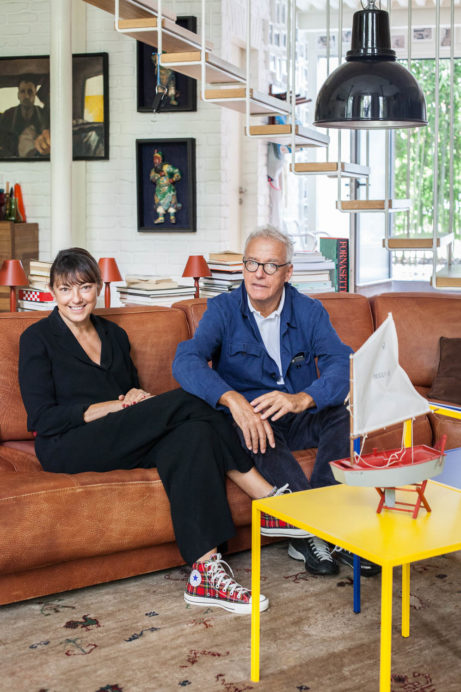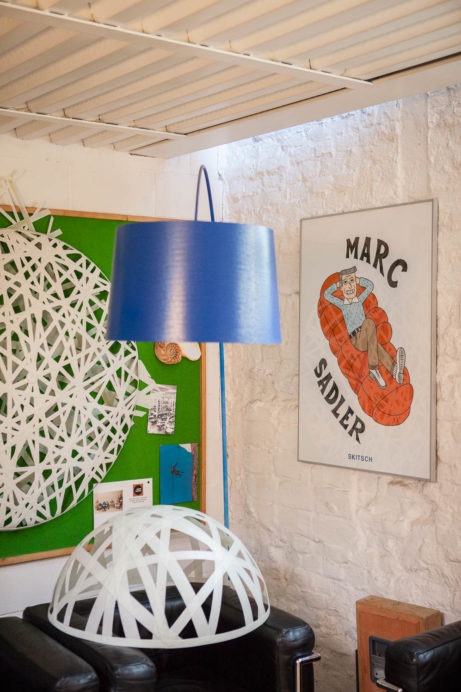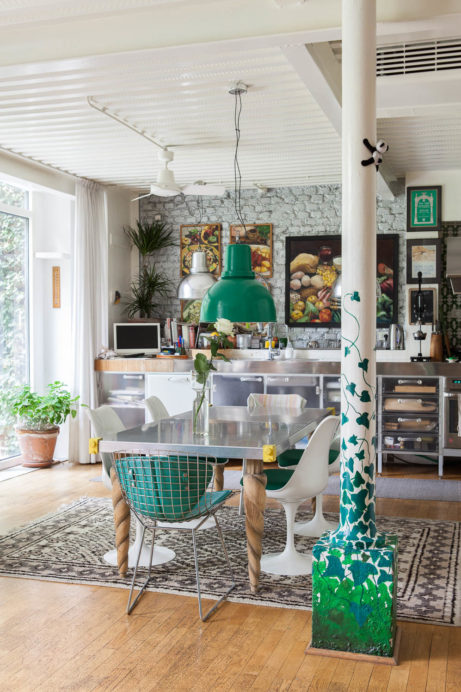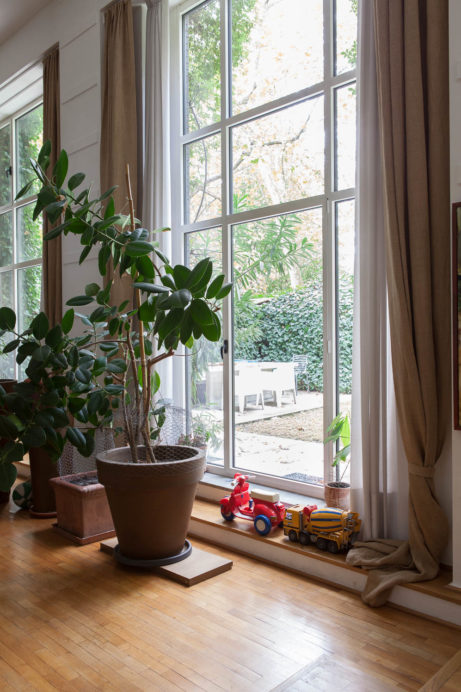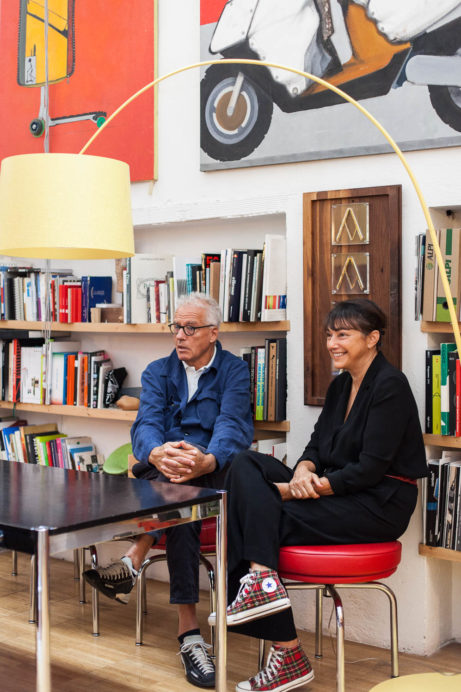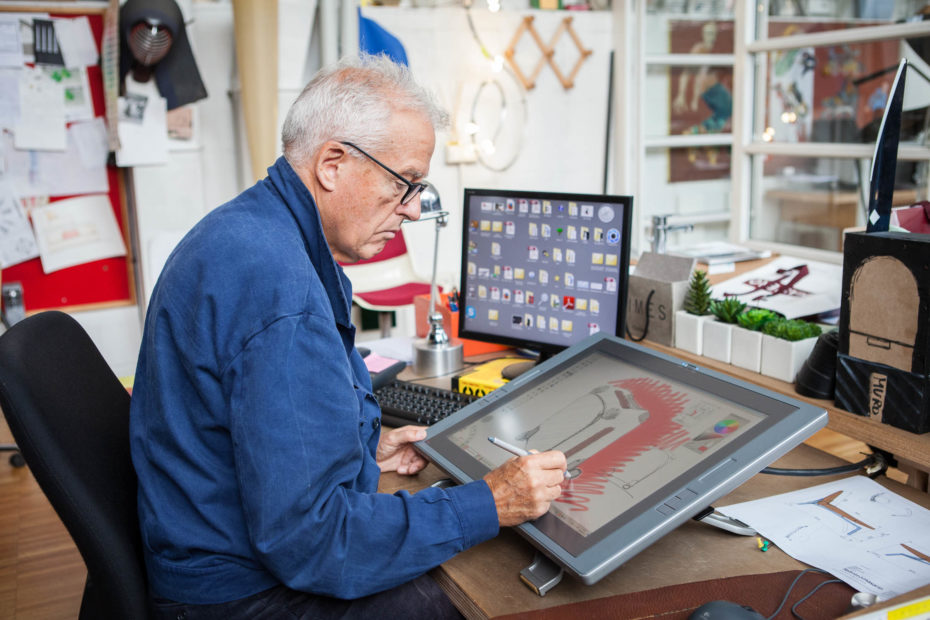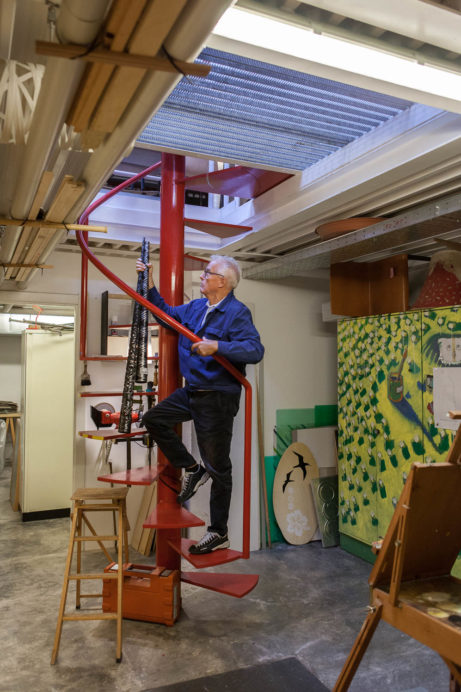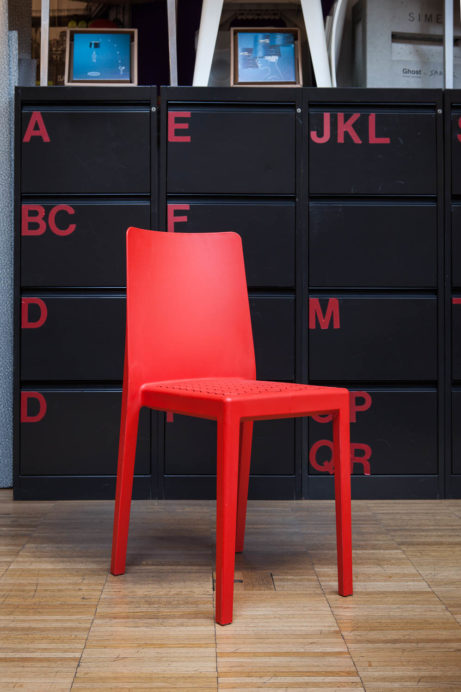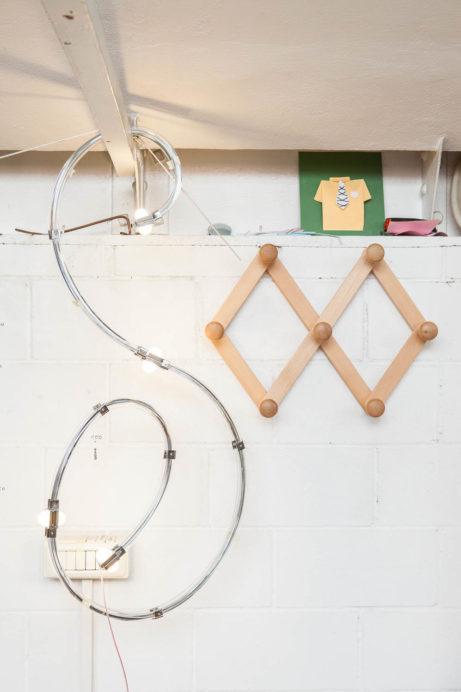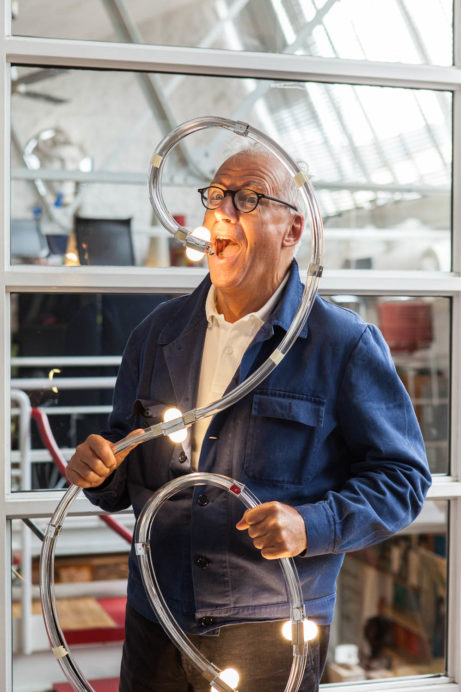The house of love: Marc and Paola Sadler apply a mixed palette to their vibrant Italian home →
The award-winning designer and his partner share their collaborative and playful approach to design, Milan-based industrial design duo Marc and Paola Sadler process the minutiae of the world around them like sponges—a useful commonality for a couple who share personal and professional lives.
Photography: Luigi Fiano
When asked when they met, Marc answers immediately “yesterday,” before jovially correcting himself, “no, twenty years ago.” An award-winning designer, Marc has sought to create technology that revolutionizes lifestyles, be it through sport, food or interiors. He realizes these works at their studio, a stone’s throw from their house in Milan’s industrial estate, Zona Tortona, where Paola then works on the end process—the colors, the PR and, crucially, the naming of each product. She came up with “Twiggy,” for example, Marc’s whimsical lamp modeled after the original that sits in their home, based on the curved profile of a fishing rod. “We work on projects together, but from a different point of view, not just looking at design from the industrial side but also from the emotional and fun approach. Marc takes the more technical side, and I work on colors and presenting the product to the press and to the company.” This collaborative process distinguishes them from other designers, as “working together from the beginning means that we are not losing the roots of the project. “I don’t have the patience for those aspects.”
“It’s a kind of no-man’s land. We were at a difficult point in our lives and decided to move because it’s such a special, beautiful place.”
In the early ’70s, at just 22, Marc created the groundbreaking designs for the first thermoplastic (and completely recyclable) ski boot. He then went on to work with prime sports brands such as Reebok and Puma. When asked about the impact of these initial collaborations on his practice, Marc replies, “It’s the same word ‘design’ but it’s not the same activity. Working with sports, you’re very close to invention, but then you are also designing three lines a year, usually, for one customer.” After leading the charge in innovative industrial design through his courageous experimentation with materials, his design career has since been marked by his tendency to take technologies used to perfect sports equipment and bring them to the domestic sphere in the form of lifestyle objects—working with the likes of Cassina, Magis, Boffi and Foscarini.
According to the pair, their home in Milan’s industrial estate, Zona Tortona, “is not really a designer house—it’s a mixed up house.” Filled with thoughtfully created, one-off objects, it developed in a piecemeal way, and is a space that feels lived-in rather than one for show. “The studio is quite similar in terms of feeling, but full of mock-ups,” says Marc. Whenever they start to make a new part of the house or office they begin with a certain idea for the project, but this then gets a waylaid. Colorful and clashing, the house is filled with artwork, much of which was drawn and painted by them. The two began painting when they moved to Venice, where they lived in a restored biscuit factory, “It’s a kind of no-man’s land. We were at a difficult point in our lives and decided to move because it’s such a special, beautiful place. The city has no logical indications.” Mapped out and spiraling like a maze, “house numbers are by chance.”
“We’ve lost the link between popularity and reason. It’s hard to find reasonable objects that are playful.”
Their decision to eventually settle in Milan seems also to have been by chance. When working in industrial design in Italy, having a studio in Milan becomes essential, so Marc and Paola found an old factory in the industrial zone and decided to make their home there, too. In true industrial designer spirit, Marc is more interested in what can be made well with inexpensive materials, and on a large scale. We talk about the beauty of wooden toys—the sensation, the aesthetic including a favored colorful wooden Kendama that sits in their home. Focused on utility and replicability, Marc says how hard it is to find high-quality objects made with affordable material that can be widely distributed. “We’ve lost the link between popularity and reason. It’s hard to find reasonable objects that are playful.”
Fascinated by the details of the city—the contrast of concrete, steel geometric slats and bronze inlaid in the street pavement—Marc shows a photo he took on his phone during a visit to Berlin. “I liked the stone, the concrete and the contrast. I’m creating this lamp in concrete and thought of switching materials. I try to find new territories or extend existing lines. I work with materials—aesthetics are really the conclusion of an exercise which involves many things.” He likes the juxtaposition of material, talking about the details of the Schloss Charlottenburg complex in Berlin: “It’s about the feeling I get from it. At the Schloss in Charlottenburg I took a lot of pictures, concentrating on the details and the contrast. It is something from the past, but executed in a way that we wouldn’t think about today.”
“Design should be transparent, invisible. We don’t pick up objects and want them for how well they are designed. We like an object because it works.”
His Bellevue-Panorama gelateria, for example, takes the quality of visibility and formed its design around this. “The company were thinking of me as a designer and the final aesthetic—rockets, spheres, carbon fibre—but I wanted to make a proper product.” The end result is a minimal display unit stripped down to several pieces that can be easily cleaned and replaced. “In this case, it was the solution that was the key, not the design,” he explains. “Design should be transparent, invisible. We don’t pick up objects and want them for how well they are designed. We like an object because it works. The gelateria has changed the business by giving manufacturers a new way of selling ice-cream. You don’t go to MoMA with this, but it’s all there inside.”
Thank you, Marc and Paola for your unique work relationship and allowing us into your beautiful home.
Marc Sadler is an accomplished designer who is most known for his experimentation with materials, most notably plastics. After designing the first thermoplastic ski boot for Italian sports brand Caber (now, Lotto), Marc went on to specialize in sports design and working with some of the top athletic brands in the world. A French citizen born in Austria, Marc is based in Milan with his wife and creative collaborator, Paola. Together they continue to experiment and innovate in the field of design. When not designing, Marc enjoys painting and sculpture. Visit their website to see more of Marc’s designs.
This portrait is part of our collaboration with USM Modular Furniture. See more of Marc and Paola’s home and other unique individuals we’ve profiled on the Personalities by USM website.
Photography: Luigi Fiano


